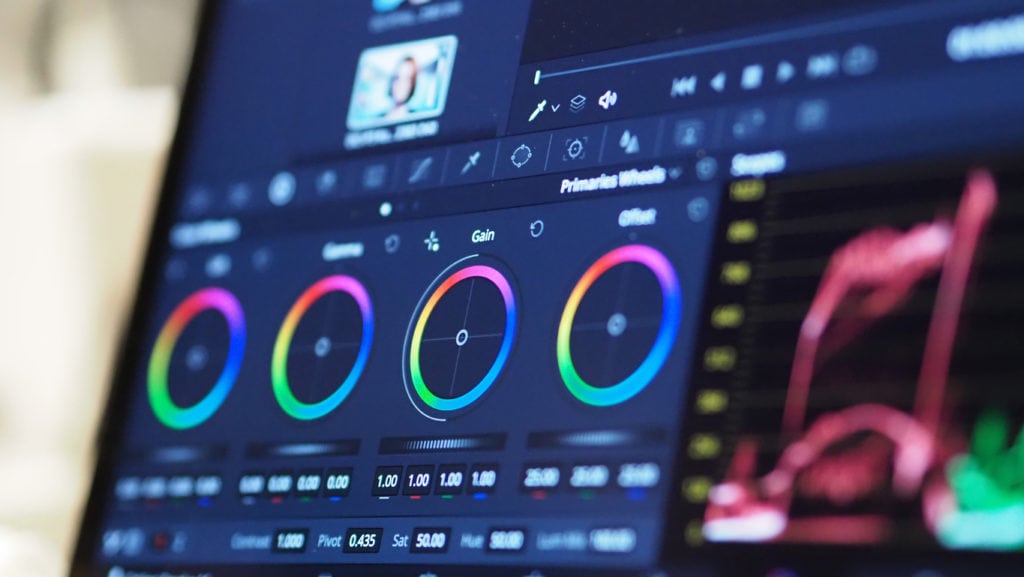
Industry Insights
What You Can Expect From a Video Production Timeline
Social media helped spread the popularity of video across every industry in the world to such an extent that 86% of businesses claim to use video in their marketing strategy. It’s inevitable that businesses shift to a form of communication that lets them literally speak to the masses with ease, but there’s a catch. Videos are an integral part of any marketing strategy, but a surprising amount of work goes into that one-minute explainer you just watched.
A video production timeline keeps everything on track and easily managed so that no matter what stage of the project you’re at, everyone knows what’s expected and where the production schedule stands.
What Goes Into a Video Production Timeline
A video production timeline has a number of steps that can be broken down into stages, with each stage taking anywhere from a few hours to a couple days or weeks. The success of your video is dependent on the success of each stage of the production timeline.
A video project starts with pre-production, moves into production and ends with post-production. Depending on the type of video you’re producing, the length of these stages may vary, which will be explained in further detail below.
Pre-Production Stage
Pre-production is the planning stage of the video. This is the step that ensures both the client and production group understand the goals of the video and what the production team will manage before the shoot begins. The time spent actually shooting a corporate video depends on the pre-production stage since planning streamlines the process and reduces the need for reshoots due to poor setup or client dissatisfaction.
Typically, pre-production lasts anywhere from two to six weeks, although how long it actually takes depends on efficient communication between the client and the production team as well as the size of the team. Pre-production can be broken down into the following steps and processes.
Crew Preparation
First, you need to establish who will have the biggest roles in the production to start the pre-production phase. Account managers will handle the client requests and introduce them to members of the crew. Members include the director, who is the creative lead on the project; the producer, who prepares and supervises; the production manager, who manages the practical aspects; and the camera and sound directors. Smaller teams may have one person filling multiple roles while larger teams may have multiple people acting or assisting for a single role.
Cast Selection
Choosing the talent for your video is the next step. The client may choose professional or internal talent for the video, with each option offering different benefits. On one hand, professional talent is almost always guaranteed to be high quality but will cost more. Internal talent is the cheaper option but may be a grab bag of ability depending on who is picked. In the end, the client has the final say on which choice is best for their video.
Concept
The concept of a video is the idea the client wants to get across to the viewer. If the client doesn’t already have a concept in mind, the writer or another representative can speak with them to get a better idea on what they want to convey before starting the script. The video concept is its essential core and takes time to perfect, so if time is of the essence then the concept should be determined before anything else.
Research
Once a concept is established, the writer needs to do the necessary research to flesh out the script and identify potential shooting locations. This may require checking out the client’s website, meeting people in person or over the phone, reading up on the company’s history and activities to get a better idea of their personality, tone and selling points, or all of the above. If the video is going to cover a more technical subject then it’s almost a requirement to check every possible angle for information.
Scripting
Once the writer has completed all the research, they can settle in to work on the script. The script gives the production crew and the client a basic feel for the tone of the video and is the first stage of review for the customer. Once the reviews and revisions have been made, you can move on to the storyboard.
Storyboarding
Storyboarding the script creates a visual representation of the shoot, similar to a cartoon strip in some ways. It outlines everything scene by scene, helping the crew picture what is physically going to happen through the course of the video. While some videos, like testimonials or short minute-long skits, don’t need a storyboard, longer videos like commercials, documentaries or explainers will require it. This is the second stage of pre-production where the client reviews the work and requests changes as needed.
Coordination
The final step in pre-production is having the producer get the shoot moving. Once all the revisions are finished and the video strategy is solidified, the information from the script and storyboard are used to find an ideal location for the shoot and set up a schedule. Permissions for off-site locations are acquired if needed, equipment is set up, and the cast and crew is informed on dates and times for filming. Now you can move into creating the actual video content and beginning the production process.
Video Production
This is the stage where you actually film the video, with the cast and crew collecting segments that will be used in the final video product. For shorter videos, this could take only a few hours or days, but larger or more complex projects like educational animations or documentaries could take months to complete.
For example, a talking-head video may take only a few minutes to shoot since it lasts about a minute. There aren’t as many cuts to make and it’s typically one continuous shot that can be done in one take. With something like a documentary, there are multiple sets, locations and minutes of video that have to be cut and reviewed. It can take hours to go over the content and find a series of clips that flow well. Once you’ve finished filming, you can move into the post-production phase.
Post-Production Steps
The culmination of your project comes together during the post-production phase, where all the shots are collected from the production stage and edited or added on to animations or other content to create the final video. This stage is usually the most time-intensive part of the production process and is dependent on the response speed of your client, the video editing time ratio and the amount of video shot. It can take weeks or months to finalize your video project depending on how many hours of editing is needed per minute in the video.
First Edit
The first edit usually arrives after a week or so, depending on the length of the film. This is sent to the client immediately for review with placeholders indicated as needed. This is the first chance for the client to request edits or adjustments before the graphics, animation or any additional changes to the video footage are made.
Second Edit
After getting feedback, the production company takes the video and revises it to fit client expectations more closely. This version will have graphics and animations added if needed and may take a few days or weeks to complete. Once completed, the second version is sent to the client for feedback. After this, you can complete the picture lock, which is the version of the video that will be sent to the client for final review with minimal errors or production issues.
Sound Mixing/Color Collection
With the picture finalized, the audio and color can be tuned as needed, typically to mix the music and voice levels so they don’t drown each other out and correct saturation levels and lighting to make the visuals stand out. This could take upwards of a week depending on how much of the video needs to be edited.
Once everything is locked in, you can deliver the video to the client, ready for distribution.

Production Timeline Factors
The timeline is important and most videos will take a few weeks or longer to produce, so the three most important criteria to cover are the type, length and style.
Video Type
There are different types of videos that clients will request ranging from explainer videos to complex animations. Depending on the scope and speciality of your business, you may not have to worry about certain types of videos, but each one has its own challenges to overcome during the video production process.
More special effects and post-production processing will extend the editing period for the video, so you’ll need to give your video team ample time to manage the product while balancing client expectations.
Video Length
The longer the video, the longer it takes to produce. Timelines may differ depending on the length, along with retakes and edits. Short videos may offer you enough time to reshoot the video a few different times and make edits as needed on the fly, but longer videos (from 30 minutes to more than an hour) don’t allow as much time for reshooting.
Video Style
Video marketing is all about style, and the style of your video will determine how many adjustments the video timeline will require. A simple explainer video may only need a few continuous shots or a single take, but something more complex like a commercial or documentary will need several shots from multiple locations. The more photos you have to go through, the longer the process will take.
The Perfect Video Production Timeline
No two production timelines are the same, and finding that golden thread that holds it all together and makes the process smooth is tough to find sometimes. If handling the entire production process from start to finish isn’t in the cards for you or you need some support, Spot Content Studio has your back.
Our video production team handles everything from researching your target audience to keeping the production timeline on track. If you want help setting up an ideal video production schedule or a fellow professional to take the reins for a bit, Spot Content Studio is always here to help.
